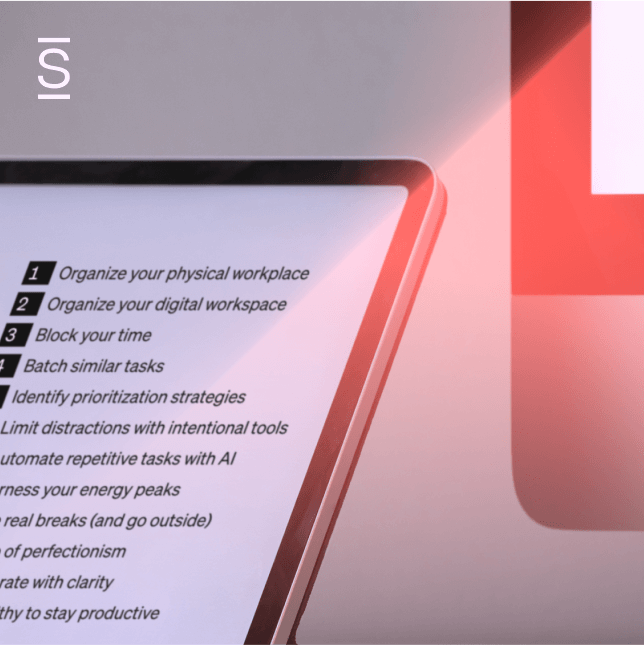If you have seen the movie Office Space (1999), you know all about pointless TPS reports, impossible-to-understand printer instructions, (“PC Load Letter”), and micromanaging superiors. Office Space was an office comedy, so the portrayals were a little extreme. But who can’t relate to the annoyances of working in an office, even if we work remotely?
Internal communications (IC) professionals feel the Office Space pain, too, no matter what industry they serve or where they are. When I talk with other IC professionals, someone will bring up an IC issue we are dealing with, and the others can immediately relate. Together, we’ll troubleshoot based on what’s worked in the past. The willingness to help each other is one of the best things about being in IC. In fact, five issues come up all the time. And yes, they drive us bananas. So, let’s talk about those five, and the best ways we can overcome them.
1. Why don’t stakeholders bring IC in earlier?
If you’re moving into a new house, you don’t hire movers the day before you go, right? You don’t want to scramble to get everything done at the last minute, and movers need time to help you prepare for a smooth, easy (as possible), and successful move. It’s essential to schedule movers well ahead of time to allow for pre-planning. Having all the players involved early in the game is the only way to ensure you get the best experience.
The same rings true for internal communications. If we can work with stakeholders early in whatever process they’re working on, we’ll have the time to build consistency and alignment between stakeholders and the audience. Getting communication out early helps prepare audiences, and gives us time to answer questions and make corrections if the process changes. When stakeholders bring IC in early, we can thoughtfully prepare the best communications possible instead of rushing them out, almost as an afterthought. Rushed internal comms don’t demonstrate a caring attitude about employees. Maybe we need to shoot a video, create promotional items, or build an intranet page. This stuff doesn’t happen overnight.
So how do you get a seat at the table early in the process? First, you need to build relationships. Having facetime with leaders and fostering good relationships gives you opportunities to build trust, and to explain why early IC involvement is a vital part of any initiative involving employees. During your time with leaders, ask them what’s coming up. Offer to help make the process smooth for everyone involved. Use success stories and previous examples, including data, as proof points to talk about the importance of bringing IC in early.
2. We get employee communications technology from the Stone Age
I’d be willing to bet that your organization doesn’t have the same website it had ten years ago. Perish the thought! There’s no way your company would still have a static, old-fashioned website. An outdated website would deter potential customers from visiting, and it sends the message that your organization isn’t up to date.
So why aren’t we implementing these same principles for employee communication technology?
According to Simpplr’s State of Internal Communications 2022, poor technology is the second-most common challenge across internal communications departments. Old, or simply bad technology actively gets in the way of internal communication efforts and makes communicating harder. We can write great messages, but if employees have trouble using the technology, they won’t engage with the information. If intranet site owners find the process of posting new content is complicated and cumbersome, employees will find the same stale content on the intranet for years. Guess what that means for employees? They’ll stop using the intranet altogether, finding it irrelevant.
On the other hand, good employee technology improves employee satisfaction, engagement, and culture. Good tech makes it easier to create and distribute information to employees, and puts information in their hands quickly and more often. When information is fresh and helpful, employees feel connected and in the know. Good tech brings analytics, providing actionable insights that show what’s working and what’s not. This feedback gives IC the proper understanding of every situation to course correct if necessary.
To get better tech, use the data you have to build a business case. Talk with leaders and explain how they can improve employee satisfaction, retention, and engagement through better employee communications technology. Use employee engagement survey data to help tell this story. Don’t know what your employees want? Ask them.
3. Do leaders get how much employees need to hear from them?
Organizations with lagging IC programs typically lack the executive involvement to unite employees. When leaders don’t communicate, expect more significant organizational issues. Employees may see the lack of communication as secrecy and that hurts the company culture. In turn, their trust and respect for leadership decrease. Then, like dominoes, when employees lack trust and respect, their motivation decreases, they lose the desire to perform, and all of that d hurts business performance. Leader communication should be more frequent. They are easy to broadcast, they help build trust, transparency, and relationships between employees and leaders.
Organizations with solid and successful internal communications functions generally have good support from leaders and executives. Leaders who communicate help improve their relationships with employees and build respect and loyalty. Regular, good leadership communications will also go a long way toward employee retention.
IC practitioners must build relationships based on trust and respect with leaders to encourage them to overcome resistance to speaking to employees and help them understand why communicating to employees will help them in the long run. Use data and research to show outcomes to nudge them to share more, using different platforms like video, newsletters, coffee with the CEO, or Ask Me Anything meetings. When you build a portfolio of leader communication successes, use them as proof points with other leaders to bring them on board.
4. Our workload isn’t always unreasonable, but our team size is
Many organizations have an internal communications function, but the entire department might be only one person. And that one IC practitioner’s boss might be an HR or marketing leader, which leaves the poor IC person alone to build and maintain the function. That wouldn’t be a big problem, except when IC becomes the catch-all for requests. Perhaps an executive needs help with a slide deck. Comms can help with that. Maybe a leader wants more information about employee open enrollment. IC does that. Updates to the intranet? Guess what? IC is responsible for that too.
Internal comms can offer more if they are well-built. Your IC team can create, write, and publish a weekly newsletter. If a leader wants to promote a video to team members, IC can not only write the content but can also shoot and edit the video. Watch what happens when you put IC in charge of Town Hall meetings! IC can get leaders together, build out a deck, book a room, send invitations to all employees, record the meeting, edit the recording, and post it on the company intranet. There are endless possibilities for a well-skilled internal comms team.
The list of requests never ends. It only grows.
The problem with these types of requests is that it leads to internal communication burnout, and IC practitioners can’t focus on top-tier, value-added work like important change management initiatives.
If you are in this situation, talk to management about getting more IC practitioners to help with the workload. Will they say yes? Who knows, but it’s worth the ask. However, if you can’t grow the team right now, prioritize your work and be very clear with leaders across the org on what IC does—and what it doesn’t do. Build a presentation that spells out expectations clearly, and use it to walk leaders through your thoughts.
5. Hello, employees, are you out there?
Lack of employee engagement has always been one of IC’s most significant challenges. According to Simpplr’s State of Internal Communications 2022, employees were more engaged with IC during the early days of COVID, but now it’s decreasing again.
Look at the data from usage metrics and employee engagement surveys to find insights into why your audience might be tuning out. Is the technology clunky? Is the content too long? Is it outdated, or boring? Do employees have to do a lot of digging even to find internal comms? That should cause you to investigate why you have a single source of information.
Employees are more engaged when organizations have strong and frequent leadership communications, consistent town halls with content that employees want to hear, and regular videos and other creative communication channels. Add employee communities within communications technologies (e.g., Slack or Teams channels), and do you think they’d use it? These familiar, easy-to-use extras help employees become even more engaged and feel like the “insiders” they are, as well as build trust with leaders and the organization. It’s all possible if you are willing to try.
Now, I believe you have my stapler….?


















